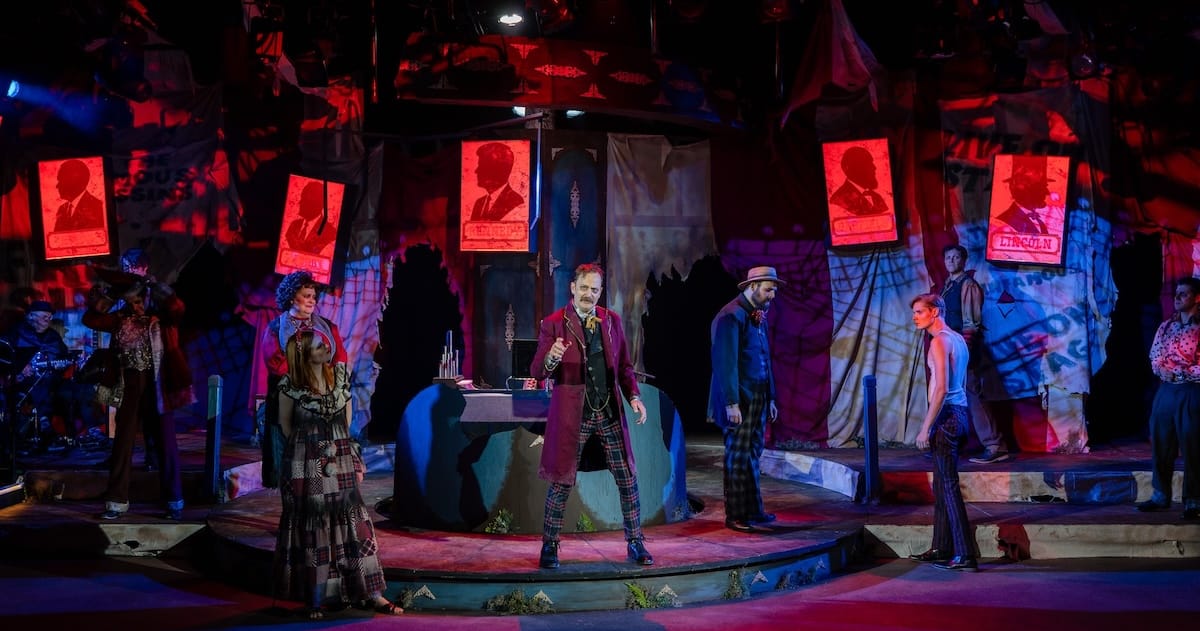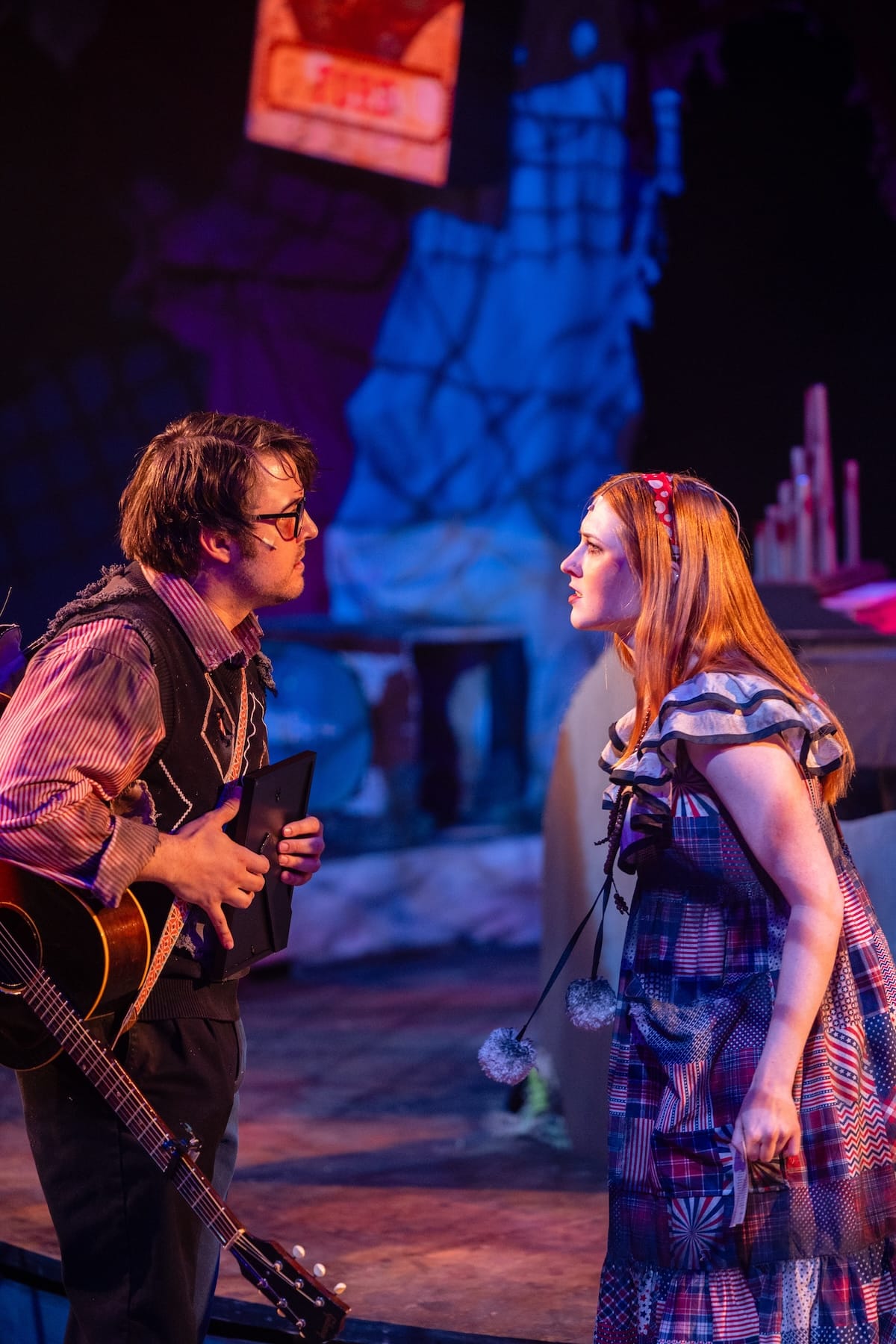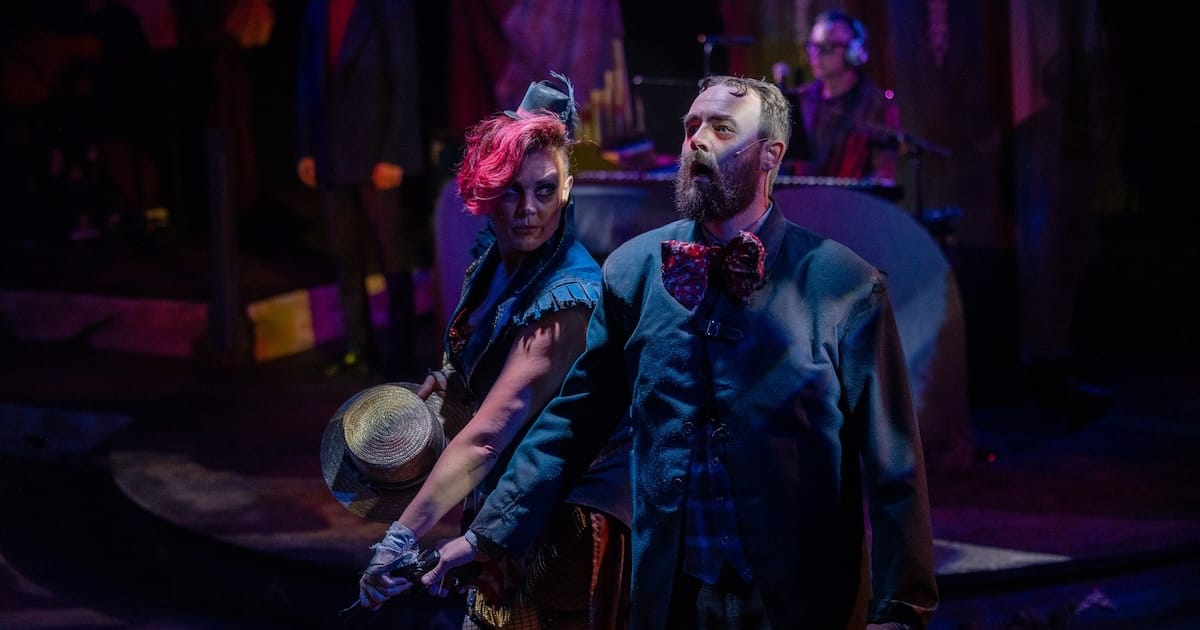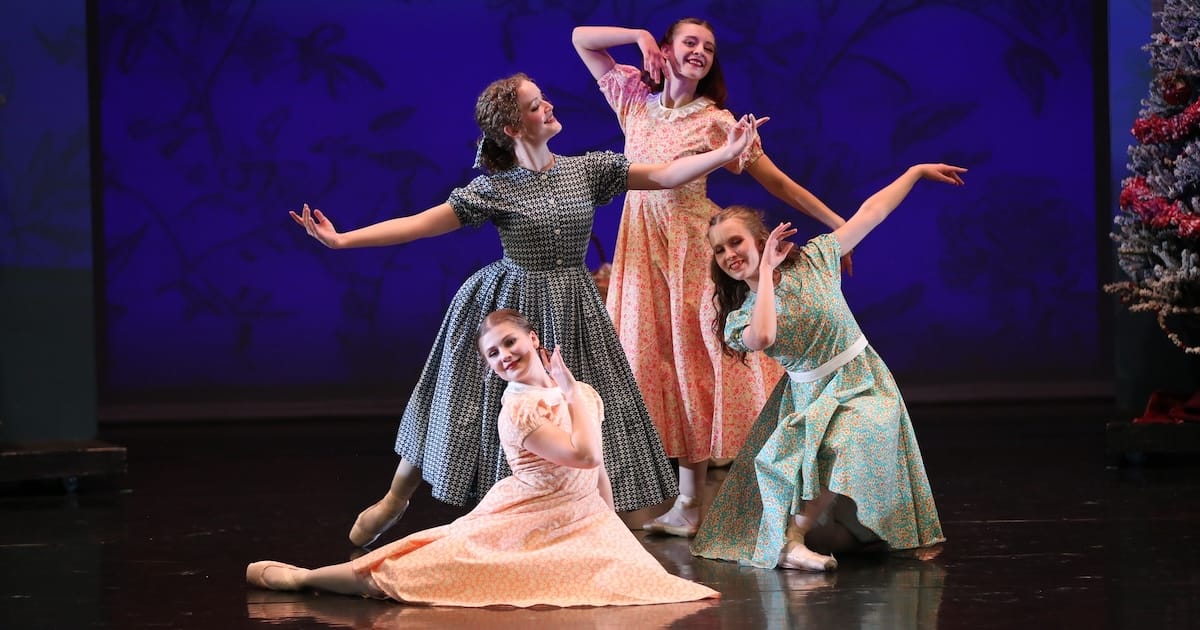Miners Alley production of the dark musical doesn’t equal the material.
Leave it to the brilliant Stephen Sondheim to create a musical about presidential assassins. I suppose this shouldn’t be a surprise from the composer who turned a mass murderer into a musical theatre star (Sweeney Todd) and brought the people in a famous painting to vibrant life (Sunday in the Park with George).
And yet, turning John Wilkes Booth and Lee Harvey Oswald, among others, into musical comedy gold is quite a feat. But that’s precisely what Sondheim and writer John Weidman did in 1990, introducing us to the nine strange individuals who tried, and in some cases succeeded, to kill U.S. presidents.
Sondheim was a master of mash ups (think Into the Woods), and Assassins is a compilation of scenes about individual rogues. Sondheim and Weidman, who wrote the book for the show, seamlessly weave their stories together with each killer’s songs reflecting the style of the era in which they lived. In this production,
Music Director David Nehls (who also plays keys up center) does his best with a tiny ensemble. But the small band doesn’t adequately communicate the force and beauty of Sondheim’s expansive score, which demands a larger orchestra than what an organization like Miners Alley can typically provide. The result is that ensemble numbers — especially the opening “Everybody’s Got a Right” — lack the impact they should have.

Drew Horwitz, center, as John Wilkes Booth in ‘Assassins.’ | Photo: Sarah Roshan
Vignettes
Assassins is largely a series of vignettes where the historical figures interact. Not surprisingly, the most powerful should be about Lee Harvey Oswald, the one many audiences will have personal memories of. In Assassins, Oswald is goaded into taking the shots at JFK by John Wilkes Booth (a compelling Drew Horowitz, who floats in and out of many scenes both directing and commenting on the action) and the other assassins.
We know this is pure fiction, but in Sondheim’s and Weidman’s hands this sequence can be searing. Unfortunately, Director Warren Sherrill’s staging and a weak Oswald (Clark Destin Jones) miss the mark. Jones almost fades into the background rather than commanding our attention as this most perplexing of presidential assassins. His speaking and singing voices are thin and he fails to project the strong, disturbed personality the role demands.
Oswald and Booth are the most fully drawn of the assassins, understandable given the presidents they killed. Most of the other characters are not as deeply realized by the book itself. Because of deficiencies in Weidman’s writing, we learn less about the deeply disturbed Charles Guiteau, who killed President Garfield; President McKinley’s assassin Leon Czolgosz; Guiseppe Zangara who opened fire on FDR but killed Chicago Mayor Anton Cermak instead; and John Hinckley Jr. (Frederick Hagreen), who shot President Reagan.

John Hauser as John Hinckley and Kira Wendland as Squeaky Fromme. | Photo: Sarah Roshan
Standouts
On the other hand, Sara Jane Moore (an unforgettable Sharon Kay White) and Lynette “Squeaky” Fromme (Kira Wendland) deserve every second they get, less for their importance (both failed to kill or even wound Gerald Ford) than their entertainment value. White’s much-married, FBI informant Moore is as unhinged as they come; Wendland does a reasonable job of conveying Fromme’s flower child naiveté as she moons over Charles Manson. Their scenes together are priceless.
Others worthy of special mention are David Otto, thoroughly convincing as Leon Czolgosz, the disaffected anarchist who killed President McKinley, and Julia Tobey as a fictitious character who serves as a sort of emcee, flitting in and out of the action.
One peculiar additional character is Nixon’s would-be assassin, a Santa-suit-clad Samuel Byck who gets a lot of stage time. Although Damon Guerrasio brings this bizarre character to vivid life, it’s hard to understand why Sondheim and Weidman give such prominence to what’s essentially a historical footnote (Byck came nowhere close to harming Nixon).
The original 1990 New York production was designed not for a large Broadway stage but for a small house, and with good reason. The closer we are physically to the bizarre cast of characters — as we are at the Miners Alley Performing Arts Center — the more real these nine disturbed individuals become, and the more distressing their acts or desires.
Missing menace
The Miners Alley production misses the mark on one important element. Most, if not all productions of Assassins, beginning with the premiere New York show, play up the black comedy in Weidman’s book, creating an overall feeling of menace. This allows the performers to convey how disturbed the various assassins were and feeds our sense that any of us might become victims of violence at any moment.
But Sherrill chooses to normalize the assassins, generally avoiding comic aspects and making the explanations they use to justify their actions seem at least partly reasonable. In most cases those justifications stem from what sound like legitimate complaints about the assassins’ treatment by aspects of American society. The fact, however, is that virtually all of them were mentally or emotionally disturbed, making Sherrill’s treatment of them problematic.
Sondheim’s shows are notoriously difficult to present for many reasons, including their complex musical structures, intricate lyrics, difficult subject matters, demanding vocal ranges and nuanced understanding of character by the performers. Sherrill acknowledges this in his program notes, writing that he has never before tackled a show “quite as challenging” as Assassins, adding that this show demands “precision, bravery and a willingness to wrestle with ideas that are as uncomfortable as they are compelling.”
The entire production team of scenic designer Tina Anderson, costume designer Crystal McKenzie, lighting designer Vance McKenzie, sound designer John Hauser and props and set dresser Samantha Piel does a masterful job of creating an alternate world of misfits. But in the end, this production fails to deliver the sucker-punch inherent in Assassins, especially at a time when random shootings are a fact of life throughout the U.S.
Alice Kaderlan is a long-time dance and theatre critic and general arts writer. She has written for newspapers and online news sites in Seattle, Washington D.C., Pittsburgh and other cities for more than 40 years. She has also appeared on various public radio stations including WAMU-FM in D.C. and KUOW in Seattle and covered arts for NPR. She currently lives and writes in Denver.






Leave A Comment